Requirements for the disinfection of mine wells and the disinfection of water in them. Water well: device and requirements of SNiP
Drinking water as valuable natural resource, protected by the state. For all sources of water supply, protected sanitary zones are established, the boundaries of which are regulated by SanPiN 2.14.1110-02.
From this article you will learn about how the sanitary protection zone of an artesian well is determined.
Sanitary zone belts
According to the SanPiN instruction, three security belts are installed around, the task of which is to prevent water contamination by all types of pollution.
I belt
This is a strict regime belt, directly adjacent to the water well and the area where the water management equipment is located. Its task is to protect the hydraulic structure from intentional or accidental damage and pollution.
The radius of the first belt, depending on the type of soil and the degree of natural protection of the aquifer, is taken to be 50 or 30 meters from the well.
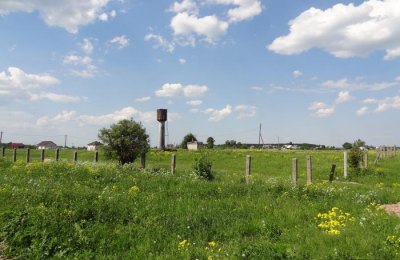
Note. First secured territory wells drinking water can be reduced to 15 meters in a radius in agreement with Rospotrebnadzor, if the structure is operated on a site with a reliably protected horizon and is kept in good sanitary and technical condition.
II belt
The second zone of the zone of sanitary protection of wells covers the territory with restrictions on bacterial hazard.
There should not be any, even potential sources of bacteriological contamination, which include such objects as:
- Animal burial grounds;
- Cemeteries;
- Silo pits;
- Poultry and livestock farms;
- Sewer facilities and yard toilets;
- manure storage;
- landfills;
- Warehouses for chemicals and fertilizers;
- Filtration and sewage fields.
III belt
The purpose of establishing this zone is to protect against chemical pollution that can penetrate through the soil into groundwater.
In this belt it is forbidden to place objects that are a source of chemical hazard:
- Harmful chemical production;
- Accumulators of industrial effluents;
- Warehouses mineral fertilizers, pesticides and fuels and lubricants;
- Sludge storage facilities, etc.
For reference. The calculation of the length of the last two zones in each case is carried out individually, depending on the level of soil permeability and other local parameters.
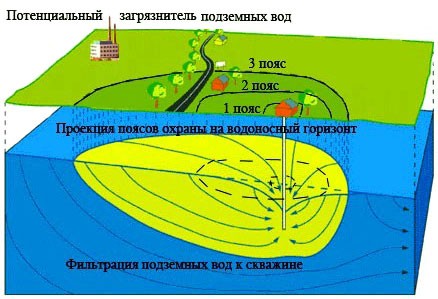
Sanitary protection zone project
The project of the sanitary protection zone (SPZ) is developed by specialized hydrogeological organizations on the basis of a hydrogeological conclusion on the site where hydraulic structures are located. As a rule, the project is drawn up as part of the project on, but it can also be an independent document if the structure already exists.
Advice. The cost of the SSZ project will be significantly lower if it is created in parallel with the construction of the well, which is preceded by various surveys.
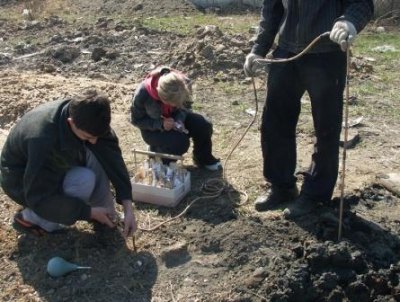
If you are the owner of a water intake used only for personal needs, the sanitary zone of an artesian well is calculated using a simplified method. If the prey water is coming on an industrial scale and supplied to many consumers, the project must take into account the slightest nuances that can affect its quality.
But this is the task of the contractor, and the customer only needs to ensure unhindered access to the water intake area and provide the following documents (for legal entities):
- Data of the head of the enterprise and the person responsible for subsoil use;
- Company details: TIN, OGRN, etc.;
- Documents for the right to use the site where the enterprise and water wells are located;
- Cadastral plan;
- Master plan of the enterprise with a layout of objects;
- Situational plan;
- Brief description of the enterprise's activities;
- A detailed scheme of the enterprise's water supply with an indication of water management equipment, water supply to subscribers, distribution of water for its intended purpose;
- Calculation of water disposal and water consumption, agreed in the territorial body of the basin water management;
- Contract with a contractor for acceptance and disposal Wastewater or a certificate of availability of your own system treatment facilities, which should indicate their coordinates and disposal method.
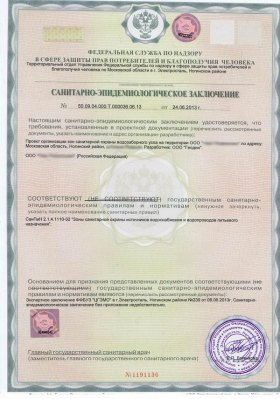
If the water well already exists, and the sanitary protection zone for it has not been defined or is outdated, you will have to restore some documents with your own hands, as well as collect new ones in order to obtain a sanitary and epidemiological conclusion for the operation of the water intake.
This is:
- Technical with the act of drilling;
- The results of laboratory analyzes of water from the well for the entire period of its operation, starting from the year of drilling. Recent studies should be no more than 3 months old.
Note. The analysis must be performed by a certified laboratory. The results are issued in the form of protocols laboratory tests according to general, organoleptic, organic, microbiological and radiological indicators.
- Water treatment scheme (if available) and the principle of its operation with water analysis protocols before and after treatment;
- Results of geophysical surveys if the age of the well is more than 25 years;
- A certified copy of the license for the right to use subsoil;
- Copies of other available documents - conclusions of sanitary-epidemiological, hydrogeological, expert and other services.
I would like to repeat once again: all such documents are drawn up and obtained much easier and faster if done in a timely manner, in parallel with surveys and work on the construction of the well.
Conclusion
Borders sanitary zones are set indefinitely, but only on the condition that the operating mode of the well will not change. In the event that the owner of the water intake has changed, the boundaries of the site, the amount of water consumed, the water supply scheme have changed, or the quality of the water has deteriorated, the Rospotrebnadzor authorities should be notified about this and a new conclusion should be obtained.
It will also be required in the case of plugging an existing well or drilling new ones. Additional information on this topic you will get if you watch the video in this article.
| Document's name: | On the Enactment of Sanitary Rules "Hygienic Requirements for Water Quality of Non-Centralized Water Supply. Sanitary protection sources. SanPiN 2.1.4.1175-02" |
| Document Number: | 2.1.4.1175-02 |
| Document type: | SanPiN Decree of the Chief State Sanitary Doctor of the Russian Federation |
| Host body: | Ministry of Health and Medical Industry of Russia Chief State Sanitary Doctor of the Russian Federation |
| Status: | current |
| Published: | Official publication, Hygienic requirements for water quality of non-centralized water supply. Sanitary protection of sources: Sanitary and epidemiological rules and regulations. - M .: Federal Center for State Sanitary and Epidemiological Surveillance of the Ministry of Health of Russia, 2003 Legislative and regulations in housing and communal services, N 2, February, 2003 Supplement to Rossiyskaya Gazeta, N 8, 2003 Bulletin of regulations federal bodies executive power, N 5, 03.02.2003 Russian newspaper, N 244, 12/28/2002 |
| Acceptance date: | November 25, 2002 |
| Effective start date: | January 08, 2003 |
On the introduction of sanitary rules "Hygienic requirements for the quality of water of non-centralized water supply. Sanitary protection of sources. SanPiN 2.1.4.1175-02"
CHIEF STATE SANITARY PHYSICIAN
RUSSIAN FEDERATION
RESOLUTION
On the implementation of sanitary rules
"Hygienic requirements for water quality
Sanitary protection of sources. SanPiN 2.1.4.1175-02"
Based on * and "Regulations on state sanitary and epidemiological regulation", approved by the Decree of the Government of the Russian Federation of July 24, 2000 N 554 **
_______________
* Collection of legislation Russian Federation, 1999, N 14, article 1650.
** Collection of Legislation of the Russian Federation, 2000, N 31, Art. 3295.
I decide:
put into action sanitary regulations"Hygienic requirements for the quality of non-centralized water supply. Sanitary protection of sources. SanPiN 2.1.4.1175-02", approved by the Chief State Sanitary Doctor of the Russian Federation on November 17, 2002, from March 1, 2003.
G.G.Onishchenko
Registered
at the Ministry of Justice
Russian Federation
December 20, 2002,
registration N 4059
Sanitary rules "Hygienic requirements for the quality of water of non-centralized water supply. Sanitary protection of sources. SanPiN 2.1.4.1175-02"
APPROVED
Chief State
sanitary doctor
Russian Federation
November 17, 2002
2.1.4. DRINKING WATER AND WATER SUPPLY
PLACES
Hygienic requirements for water quality
decentralized water supply.
Sanitary protection of springs
Sanitary and epidemiological rules and regulations
SanPiN 2.1.4.1175-02
I. General provisions
1.1. These "Sanitary and Epidemiological Rules and Norms" have been prepared on the basis of the Federal Law "On the Sanitary and Epidemiological Welfare of the Population" dated March 30, 1999 N 52-FZ (Collected Legislation of the Russian Federation, 1999, N 14, Art. 1650), the Decree of the Government of the Russian Federation dated July 24, 2000 N 554 "On approval of the Regulations on the State Sanitary and Epidemiological Service of the Russian Federation and the Regulations on the State Sanitary and Epidemiological Rationing" (Collected Legislation of the Russian Federation, 2000, N 31, Art. 3295) and are aimed at preventing and eliminating pollution of water sources of non-centralized water supply for general and individual use.
1.2. "Sanitary rules and norms" establish hygiene requirements to the quality of water sources of non-centralized water supply, to the choice of location, equipment and maintenance of water intake facilities and the territory adjacent to them.
1.3. Non-centralized water supply is the use of water from underground sources for drinking and household needs of the population, taken with the help of various structures and devices open to common use or being in individual use, without submitting it to the place of spending.
1.4. Sources of non-centralized water supply are groundwater, the capture of which is carried out by arranging and special equipment of water intake structures (shaft and tubular wells, capturing springs) for general and individual use.
1.5. "Sanitary rules and norms" are mandatory for legal entities, individual entrepreneurs and citizens.
1.6. Control over compliance with the requirements of the "Sanitary Rules and Norms" is carried out by the centers of state sanitary and epidemiological surveillance in accordance with the Regulations on the State Sanitary and Epidemiological Service of the Russian Federation.
II. Requirements for choosing the location of water intake facilities for non-centralized water supply
2.1. The choice of the location of the water intake facilities of non-centralized water supply is of priority importance in maintaining the constancy of the quality of drinking water, preventing its bacterial or chemical pollution, preventing the incidence of waterborne infections among the population, as well as preventing possible intoxications.
2.2. The choice of the location of water intake facilities is carried out by their owner with the involvement of relevant specialists and is carried out on the basis of geological and hydrogeological data, as well as the results of a sanitary survey of the nearby territory.
2.3. Geological and hydrological data should be presented to the extent necessary to address the following issues: the depth of groundwater, the direction of groundwater flow in terms of the settlement, the approximate thickness of the aquifer, the possibility of interaction with existing or planned water intakes in neighboring areas, as well as with surface waters (pond, swamp, stream, reservoir, river).
2.4. The data of the sanitary survey should contain information on the sanitary condition of the location of the designed water intake facility and the adjacent territory, indicating the existing or possible sources of microbial or chemical water pollution.
2.5. The location of the water intake facilities should be chosen in an uncontaminated area, remote at least 50 meters upstream of the groundwater from existing or possible sources of pollution: latrines and pits, warehouses for fertilizers and pesticides, local industries, sewer facilities and etc.
2.6. Water intake facilities of non-centralized water supply should not be located in areas flooded by flood waters, in wetlands, as well as in places subject to landslides and other types of deformation, and also closer than 30 meters from highways with heavy traffic.
2.7. The number of people using a non-centralized water supply source is determined in each specific case based on the flow rate of the source and the accepted water consumption standards. Water intake structures must ensure the passage of the required volumes of water through them.
III. Requirements for the arrangement and equipment of water intake facilities for non-centralized water supply
3.1. The correct arrangement and equipment of water intake facilities allows solving not only the issues of reliability and durability of such facilities, ease of use, but also the protection of water from pollution and clogging.
3.2. The most common water intake facilities in populated areas are shaft and tube wells. various designs and depth, as well as capturing springs (keys).
3.3. Requirements for the device of mine wells
3.3.1. Shaft wells are designed to receive groundwater from the first unconfined aquifer from the surface. Such wells are a round or square shaft and consist of a head, a shaft and a water intake.
If this distance cannot be observed, the location of the water intake facilities in each specific case is agreed with the center of state sanitary and epidemiological surveillance.
3.3.2. The head (aerial part of the well) serves to protect the mine from clogging and pollution, as well as for observation, water lifting, water intake and must be at least 0.7-0.8 meters above the ground.
3.3.3. The head of the well must have a cover or reinforced concrete floor with a hatch, also closed with a lid. From above, the head is covered with a canopy or placed in a booth.
3.3.4. Along the perimeter of the head of the well, a "castle" should be made of well-washed and carefully compacted clay or greasy loam 2 meters deep and 1 meter wide, as well as a blind area of stone, brick, concrete or asphalt with a radius of at least 2 meters with a slope of 0.1 meters from the well towards the cuvette (tray). There should be a fence around the well, and a bench for buckets is arranged near the well.
3.3.5. The trunk (mine) serves for the passage of water-lifting devices (buckets, buckets, scoops, etc.), and also in some cases for the placement of water-lifting mechanisms. The walls of the shaft must be dense, well insulating the well from the penetration of surface runoff, as well as perched water.
3.3.6. For lining the walls of the well, concrete or reinforced concrete rings are primarily recommended. In their absence, the use of stone, brick, wood is allowed. The stone (brick) for lining the walls of the well must be strong, without cracks, not staining the water, and be laid in the same way as concrete or reinforced concrete rings on cement mortar (cement of high grades that does not contain impurities).
3.3.7. When constructing log cabins, certain types of wood in the form of logs or beams should be used: for the crowns of the above-water part of the log house - spruce or pine, for the water intake part of the log house - larch, alder, elm, oak. The timber must be good quality, peeled, straight, healthy, without deep cracks and wormholes, not infected with a fungus, harvested in 5-6 months.
3.3.8. The water intake part of the well serves for the inflow and accumulation of groundwater. It should be deepened into the aquifer for better opening of the reservoir and increasing the flow rate. To ensure a large influx of water into the well, the lower part of its walls may have holes or be arranged in the form of a tent.
3.3.9. To prevent soil bulging from the bottom of the well by ascending groundwater flows, the appearance of turbidity in the water and to facilitate cleaning, a return filter should be poured at the bottom of the well.
3.3.10. To descend into the well during repair and cleaning, cast-iron brackets must be embedded in its walls, which are staggered at a distance of 30 cm from each other.
3.3.11. The rise of water from mine wells is carried out using various devices and mechanisms. The most acceptable from a hygienic point of view is the use of pumps of various designs (manual and electric). If it is not possible to equip the well with a pump, a gate with one or two handles, a gate with a wheel for one or two buckets, a “crane” with a public, firmly attached bucket, etc., are allowed. presented no difficulty.
3.4. Requirements for the device of tubular wells (wells)
3.4.1. Tubular wells are designed to obtain groundwater from aquifers occurring at various depths, and are shallow (up to 8 m) and deep (up to 100 m or more). Tubular wells consist of a casing pipe (pipes) of various diameters, a pump and a filter.
3.4.2. Small tubular wells (Abyssinian) can be of individual and public use; deep (artesian wells), as a rule, for public use.
The device and equipment of artesian wells are carried out in accordance with building codes and regulations.
3.4.3. When equipping tubular wells (filters, protective nets, pump parts, etc.), materials, reagents and small-sized treatment devices are used that are approved by the Russian Ministry of Health for use in the practice of domestic and drinking water supply.
3.4.4. The head of the tubular well should be 0.8-1.0 m above the ground, hermetically sealed, have a casing and a drain pipe equipped with a hook for hanging a bucket. Around the head of the well, blind areas are arranged (see clause 3.3.4) and a bench for buckets.
3.4.5. The rise of water from a tubular well is carried out using manual or electric pumps.
3.5. Requirements for the device of capturing springs
3.5.1. Captures are designed to collect groundwater that comes out to the surface from ascending or descending springs (springs) and are specially equipped catchment chambers of various designs.
3.5.2. Water is taken from ascending springs through the bottom of the capturing chamber, from descending springs - through holes in the chamber wall.
3.5.3. Capture chambers of descending springs must have watertight walls (except for the wall from the side of the aquifer) and a bottom, which is achieved by building a "castle" of crumpled, rammed clay. The chambers of ascending springs are equipped with a clay "castle" along the entire perimeter of the walls. The wall material can be concrete, brick or wood of certain species (see paragraphs 3.3.6 and 3.3.7).
3.5.4. Capture chambers must have a neck with a hatch and a lid, be equipped with water intake and overflow pipes, have an emptying pipe with a diameter of at least 100 mm, a ventilation pipe and must be placed in special ground structures in the form of a pavilion or booth. The area around the dam must be fenced off.
3.5.5. The water intake pipe must be equipped with a crane with a hook for hanging a bucket and be led out 1-1.5 m from the cappation. A bench for buckets is arranged under the crane. On the ground, at the end of the intake and overflow pipes, a paved tray is arranged to drain excess water into the drainage ditch.
3.5.6. The mouth of the capturing chamber must be insulated and rise above the ground by at least 0.8 m. To protect the capturing chamber from flooding with surface water, blind areas made of brick, concrete or asphalt should be equipped with a slope towards the drainage ditch.
3.5.7. In order to protect the capturing chamber from sand drift, a return filter is arranged on the side of the water flow, and to free water from suspension, the capturing chamber is divided by an overflow wall into two compartments: one for settling water and its subsequent purification from sediment, the second - for clarified water intake.
3.5.8. For the purposes of inspection, cleaning and disinfection of capping, doors and hatches, as well as steps or brackets, must be arranged in the chamber wall. The entrance to the chamber should not be arranged above the water, but taken out to the side so that pollution from the threshold or legs does not fall into the water. Doors and hatches should be of sufficient height and dimensions to allow easy access to the capturing chamber.
IV. Water quality requirements for non-centralized water supply
4.1. In terms of its composition and properties, non-centralized water supply water must comply with the standards given in the table.
|
Indicators |
Units |
standard |
||||||||||||||||||||
|
Organoleptic |
||||||||||||||||||||||
|
Sanitary rules establish hygienic requirements for the quality of water from non-centralized water supply sources, for the choice of location, equipment and maintenance of water intake facilities and the territory adjacent to them.
State sanitary and epidemiological regulation State sanitary and epidemiological 2.1.4 DRINKING WATER AND WATER SUPPLY Hygiene requirements Sanitary and epidemiological rules and regulations SanPiN 2.1.4.1175-02 Russian Ministry of Health Moscow· 2003 1. Developed by: MD. A. A. Korolev, d.m. n. M. V. Bogdanov, Ph.D. A. A. Semenova (MMA named after I. M. Sechenov), Ph.D. A. E. Nedachin, Ph.D. n. T. Z. Artemova (NII ECH and GOS named after A. N. Sysin), Ph.D. n. V. L. Suslikov (Chuvash State University), MD A. V. Ivanov (Kazan Medical University), Ph.D. A. A. Orlov (Saratov Research Institute of Rural Hygiene of the Ministry of Health of the Russian Federation), A. I. Rogovets (Central Scientific Research Institute of the Ministry of Health of the Russian Federation), Ph.D. M. M. Gasilin, with the participation of A. P. Veselov (Department of the SSES of the Ministry of Health of the Russian Federation). 3. Approved by the Chief State Sanitary Doctor of the Russian Federation - First Deputy Minister of Health of the Russian Federation G. G. Onishchenko on November 17, 2002. 4. Since the introduction of these sanitary rules "Requirements for the quality of non-centralized water supply. Sanitary protection of sources SP 2.1.4.554-96" become invalid. 5. Registered with the Ministry of Justice of the Russian Federation on December 20, 2002, Registration No. 4059. The federal law “State sanitary and epidemiological rules and regulations (hereinafter referred to as sanitary rules) are regulatory legal acts that establish sanitary and epidemiological requirements (including criteria for the safety and (or) harmlessness of environmental factors for humans, hygienic and other standards), non-compliance with which creates threat to human life or health, as well as the threat of the emergence and spread of diseases” (Article 1). “On the territory of the Russian Federation, there are federal sanitary rules approved and put into effect by the federal executive body authorized to exercise state sanitary and epidemiological supervision in the manner established by the Government of the Russian Federation. Compliance with sanitary rules is mandatory for citizens, individual entrepreneurs and legal entities” (Article 39). "For violation health legislation establishes disciplinary, administrative and criminal liability” (Article 55). CHIEF STATE SANITARY PHYSICIAN RESOLUTION 25.11.02 Moscow#40 Implementation of sanitary rules "Hygienic requirements for water quality non-centralized water supply. Sanitary protection sources. SanPiN 2.1.4.1175-02" Based federal law“Sanitary and epidemiological well-being of the population” dated March 30, 1999 No. 52-FZ and “Regulations on state sanitary and epidemiological regulation”, approved by Decree of the Government of the Russian Federation dated July 24, 2000 No. 554. RESOLVE: Enact the sanitary rules “Hygienic requirements for water quality of non-centralized water supply. Sanitary protection of sources. SanPiN 2.1.4.1175-02, approved by the Chief State Sanitary Doctor of the Russian Federation on November 17, 2002, from March 1, 2003. G.G. Onishchenko Ministry of Health of the Russian Federation CHIEF STATE SANITARY PHYSICIAN RESOLUTION 25.11.02 Moscow#41 Abolition of sanitary rules "Requirements for water quality decentralized water supply. Sanitary protection of sources. SanPiN2.1.4.554-96 » In connection with the approval on November 17, 2002 by the Chief State Sanitary Doctor of the Russian Federation and the entry into force on March 1, 2003 of the sanitary rules “Hygienic requirements for water quality of non-centralized water supply. Sanitary protection of sources. SanPiN 2.1.4.1175-02". RESOLVE: From the moment the said sanitary rules come into force, the sanitary rules “Requirements for the quality of water of non-centralized water supply” shall be considered invalid on the territory of the Russian Federation. Sanitary protection of sources. SanPiN2.1.4.554-96”, approved by the former Goskomsanepidnadzor of Russia. G. G. Onishchenko APPROVE Chief State Sanitary doctor of the Russian Federation - First Deputy Minister of Health Russian Federation G. G. Onishchenko 2.1.4. DRINKING WATER AND WATER SUPPLY Hygiene requirements Sanitary and epidemiological rules and regulations 1. General Provisions1.1. These sanitary and epidemiological rules and regulations (hereinafter - sanitary regulations) prepared on the basis of the Federal Law "On the sanitary and epidemiological welfare of the population" of March 30, 1999 No. 52-FZ (Collected Legislation of the Russian Federation, 1999 No. 14, Art. 1650), Decree of the Government of the Russian Federation of July 24, 2001 No. 554 "On approval of the Regulations on the State Sanitary and Epidemiological Service of the Russian Federation and the Regulations on the State Sanitary and Epidemiological Rationing ”(Collected Legislation of the Russian Federation, 2000 No. 31, Art. 3295) and are aimed at preventing and eliminating water pollution from non-centralized water supply sources for general and individual use. 1.2. Sanitary rules establish hygienic requirements for the quality of water sources of non-centralized water supply, for the choice of location, equipment and maintenance of water intake facilities and the territory adjacent to them. 1.3. Non-centralized water supply is the use of water from underground sources for drinking and household needs of the population, taken from various facilities and devices open for public use or in individual use, without supplying it to the place of consumption. 1.4. Sources of non-centralized water supply are groundwater, the capture of which is carried out by the installation and special equipment of water intake structures (shaft and tubular wells, spring capturing) for general and individual use. 1.5. Sanitary rules are mandatory for legal entities, individual entrepreneurs and citizens. 1.6. Control over compliance with the requirements of sanitary rules is carried out by the centers of state sanitary and epidemiological surveillance in accordance with the Regulations on the State Sanitary and Epidemiological Service of the Russian Federation. 2. Requirements for choosing the location of water intake facilities for non-centralized water supply2.1. The choice of the location of water intake facilities for non-centralized water supply is of priority importance in maintaining the constancy of the quality of drinking water, preventing its bacterial or chemical contamination, preventing the incidence of waterborne infections among the population, as well as preventing possible intoxications. 2.2. The choice of the location of water intake facilities is carried out by their owner with the involvement of relevant specialists and is carried out on the basis of geological and hydrogeological data, as well as the results of a sanitary survey of the nearby territory. 2.3. Geological and hydrological data should be presented to the extent necessary to solve the following problems.millet: depth of groundwater, groundwater flow direction in plan locality, estimated capacity of the aquifer, the possibility of interaction with existing or planned water intakes in neighboring areas, as well as with surface waters (pond, swamp, stream, reservoir, river). 2.4. Sanitary inspection data should contain information on the sanitary condition of the location of the designed water intake facility and the adjacent territory, indicating existing or possible sources of microbial or chemical water pollution. 2.5. The location of the water intake facilities should be chosen in an uncontaminated area, remote at least 50 meters upstream of the groundwater flow from existing or possible sources of pollution: latrines and pits, warehouses for fertilizers and pesticides, local industries, sewerage facilities, etc. 2.6. Water intake structures of non-centralized water supply should not be installed in areas flooded with flood waters, in wetlands, as well as in places subject to landslides and other types of deformation, and also closer than 30 meters from highways with heavy traffic. 2.7. The number of the population using a non-centralized water supply source is determined in each specific case based on the flow rate of the source and the accepted water consumption standards. Water intake structures must ensure the passage of the required volumes of water through them. 3. Requirements for the arrangement and equipment of water intake facilities for non-centralized water supply3.1. The correct arrangement and equipment of water intake facilities allows solving not only the issues of reliability and durability of such facilities, ease of use, but also the protection of water from pollution and clogging. 3.2. The most common water intake facilities in populated areas are shaft and tubular wells of various designs and depths, as well as captive springs (keys). 3.3. Requirements for the device of mine wells3.3.1. Mine wells are designed to receive groundwater from the first from the surface of a non-pressure aquifer. Such wells are a round or square shaft and consist of a head, a shaft and a water intake. If this distance cannot be observed, the location of the water intake facilities in each specific case is agreed with the center of state sanitary and epidemiological surveillance. 3.3.2. The head (aerial part of the well) serves to protect the mine from clogging and pollution, as well as for observation, water lifting, water intake and must be at least 0.7 - 0.8 m above the ground. 3.3.3. The head of the well must have a cover or a reinforced concrete ceiling with a hatch, also closed with a cover. From above, the head is covered with a canopy or placed in a booth. State sanitary and epidemiological regulation State sanitary and epidemiological 2.1.4. DRINKING WATER AND WATER SUPPLY Hygiene requirements Sanitary and epidemiological rules and regulations SanPiN 2.1.4.1175-02 Russian Ministry of Health Moscow· 2003 1. Developed by: MD. A. A. Korolev, MD M. V. Bogdanov, Ph.D. A. A. Semenova (MMA named after I. M. Sechenov), Ph.D. A. E. Nedachin, Ph.D. n. T. Z. Artemova (NII ECH and GOS named after A. N. Sysin), Doctor of Medical Sciences V. L. Suslikov (Chuvash State University), Doctor of Medical Sciences A. V. Ivanov (Kazan Medical University), Ph.D. A. A. Orlov (Saratov Research Institute of Rural Hygiene of the Ministry of Health of the Russian Federation), A. I. Rogovets (Central Scientific Research Institute under the Ministry of Health of the Russian Federation), Ph.D. M. M. Gasilin, with the participation of A. P. Veselov (Department of the SSES of the Ministry of Health of the Russian Federation). 3. Approved by the Chief State Sanitary Doctor of the Russian Federation - First Deputy Minister of Health of the Russian Federation G. G. Onishchenko on November 17, 2002 4. Since the introduction of these sanitary rules “Requirements for water quality of non-centralized water supply. Sanitary protection of sources SP 2.1.4.554-96 "are no longer valid. 5. Registered with the Ministry of Justice of the Russian Federation on December 20, 2002, Registration No. 4059. the federal law “State sanitary and epidemiological rules and regulations (hereinafter referred to as sanitary rules) - regulatory legal acts that establish sanitary and epidemiological requirements (including criteria for the safety and (or) harmlessness of environmental factors for humans, hygienic and other standards), non-compliance which poses a threat to human life or health, as well as the threat of the emergence and spread of diseases” (Article 1). “On the territory of the Russian Federation, federal sanitary rules are in force, approved and put into effect by the federal executive body authorized to exercise state sanitary and epidemiological supervision in the manner established by the Government of the Russian Federation. Compliance with sanitary rules is mandatory for citizens, individual entrepreneurs and legal entities” (Article 39). “Disciplinary, administrative and criminal liability is established for violation of sanitary legislation” (Article 55). RESOLUTION 25.11.02 Moscow#40 On the introduction of sanitary rules "Hygienic requirements for water quality decentralized water supply. Sanitary protection sources. SanPiN 2.1.4.1175-02" Based on the Federal Law "On the sanitary and epidemiological well-being of the population" dated March 30, 1999 No. 52-FZ and the "Regulations on state sanitary and epidemiological regulation", approved by the Decree of the Government of the Russian Federation dated July 24, 2000 No. 554. RESOLVE: Enact sanitary rules “Hygienic requirements for water quality of non-centralized water supply. Sanitary protection of sources. SanPiN 2.1.4.1175-02, approved by the Chief State Sanitary Doctor of the Russian Federation on November 17, 2002, from March 1, 2003. G. G. Onishchenko Ministry of Health of the Russian Federation CHIEF STATE SANITARY PHYSICIAN RESOLUTION 25.11.02 Moscow No. 41 On the abolition of sanitary rules "Requirements for water quality decentralized water supply. Sanitary protection of sources. With absence central water supply on the site, underground horizons can become the only source of drinking and domestic water. To get to this water, it is necessary to arrange a water well. If you follow the technology of its manufacture, you can get a durable and easy-to-use source of clean drinking water. From such a well it is easy to supply water to a house or cottage. However, when choosing a site for construction and installation of a structure, it is necessary to strictly follow the rules of SNiP 2.04.02-84. Types and features of wellsThere are two types of water wells:
The first type is commonly called a column. Usually they were installed on the streets of villages. A hand pump is used to extract water from the depth in such wells. These wells are installed in places of shallow occurrence of aquifers. Its installation is very fast. But for the construction of a tubular well, drilling equipment will be needed, because they do not dig a hole, but drill it. A shaft well is the most affordable option for self-assembly. It is dug with a shovel, and the walls are strengthened. This is a traditional well country houses and dachas. Depending on the material of manufacture, several types of mine water wells are distinguished:
Reinforced concrete wells are the most popular. They are durable (can last up to 50 years). Their depth reaches 15-20 m. However, the installation of such a water intake device will require a lot of labor. First of all, a lot of effort will be spent on digging a deep hole. At the same time, its diameter must be larger than the size of the rings in order to perform a sand and gravel backfill from the outside. And for lowering concrete rings have to order Construction crane. At the bottom of such a well, a filter is arranged from a sand and gravel cushion 300-400 mm high. 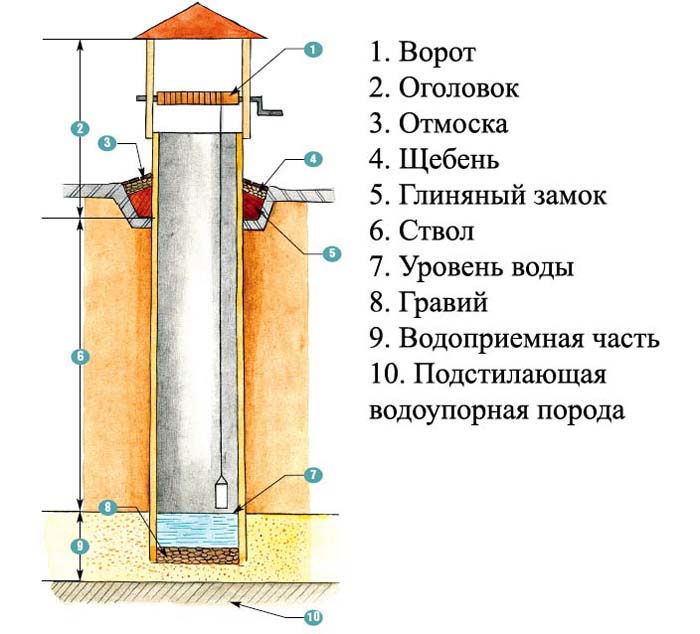
Recently, more and more often the owners of private houses choose plastic water wells. Their main advantage is that it is a one-piece construction due to the high tightness of all joints and seams. The dimensions of such structures can be any, depending on the requirements. They are no less durable than reinforced concrete devices, and can also last up to 50 years. Them additional advantage– fast installation without the use of construction equipment. Wooden and brick water intake structures are a thing of the past. Now they are practically not made due to the laboriousness and duration of the construction process. In addition, these structures do not meet the requirements of SNiP, because silt and dirt quickly settle on the brick and wooden walls of such water wells, which reduces the quality of drinking water.
Shaft well deviceIn the design of such wells, three main parts can be distinguished:
Advantages and disadvantages of water wells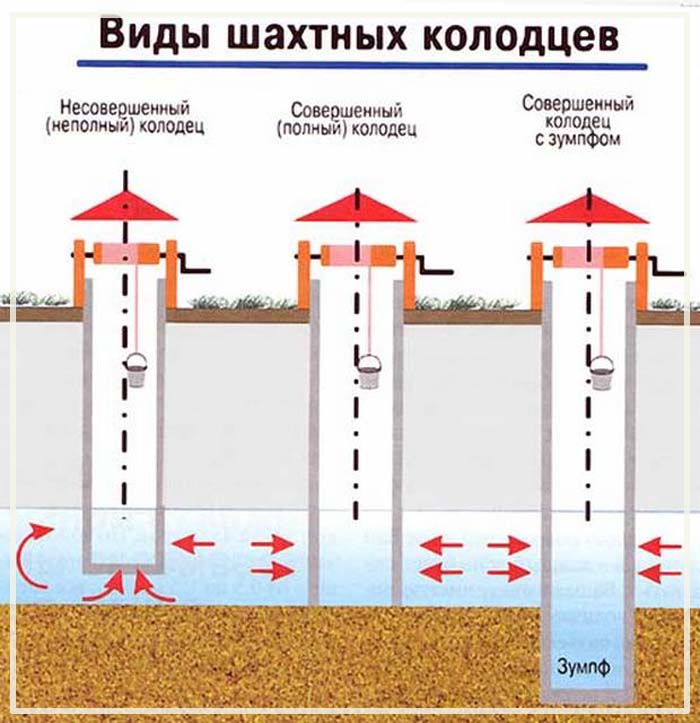 The advantages of such water intake facilities include the following:
However, these water intake structures also have disadvantages:
Choosing a place for construction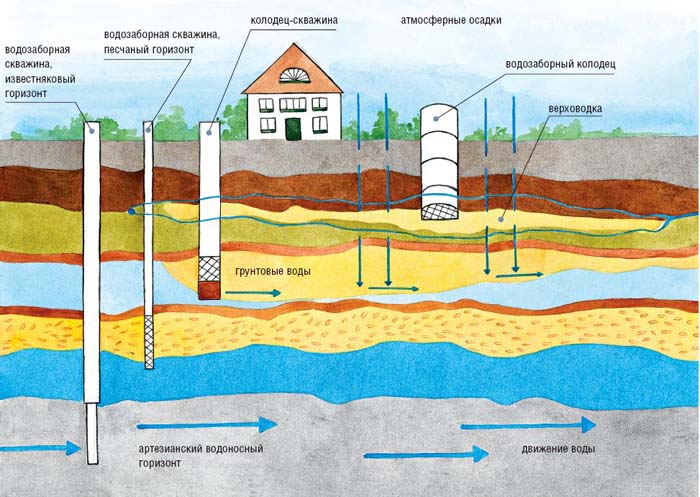 First of all, you need to find right place for the construction of a water intake structure and determine its depth. If there are similar structures in neighboring areas, the task is facilitated. To do this, you should talk to your neighbors and ask them for the following information:
When choosing a place for construction, one should be guided by the standard distances from SNiP 30-02-97. According to them, the following minimum distances are allowed between the well and other objects on the site:
According to SNiP, cesspools should not be located above the water intake well. Well construction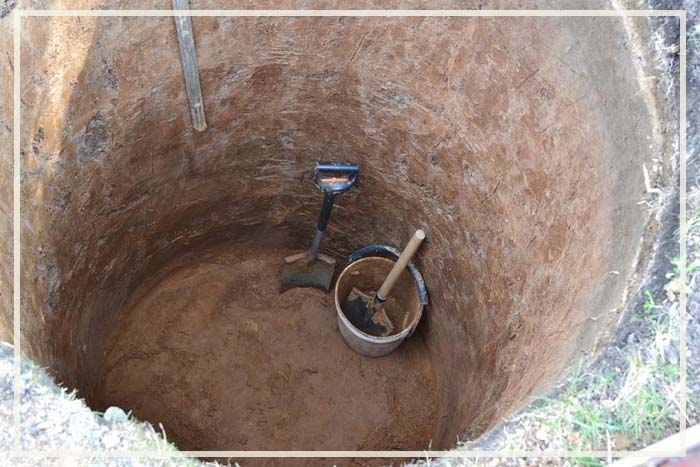 We start building a well by digging a hole. At the same time, its diameter should be half a meter larger than the diameter of the rings. This is necessary for the installation of a compacting backfill of sand and gravel around the perimeter of the structure.
Rings with a diameter of 100 cm and a height of 25-50 cm are considered optimal for a mine structure. bigger size it is difficult to lower and turn on your own (without the use of equipment). To facilitate digging and arranging a well, a tripod is installed above the pit. With its help it is convenient to raise the earth and lower concrete rings. Digging the trunk and installing rings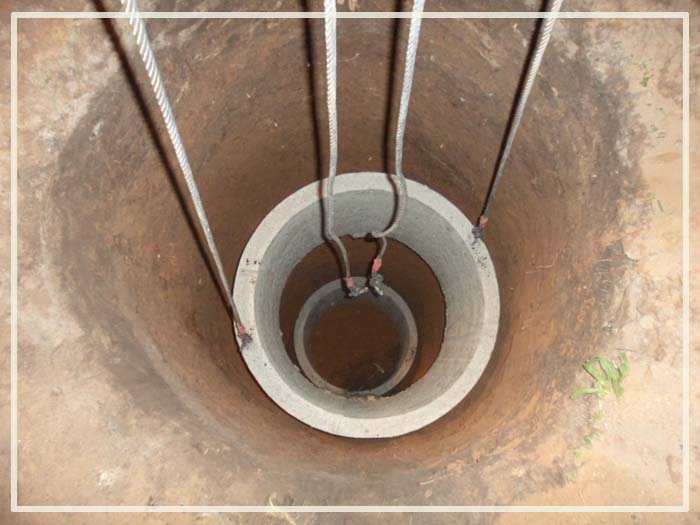 Work is carried out in this order:
Water intake and filter construction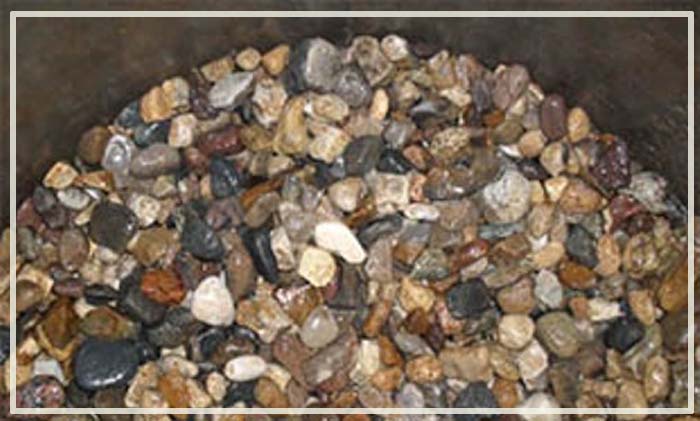 According to SNiP, all wells must be equipped with a filter. This will effectively purify the water and make it drinkable. For the bottom filter device, do the following:
WaterproofingThe requirements of SNiP provide for the mandatory installation of external and internal waterproofing shaft of a mine well. To seal the joints between reinforced concrete rings, you can use special formulations, liquid glass or prepare a mixture of PVA glue and cement. For better penetration mixtures, first all the seams are coated with a liquid solution of glue, and then a thicker mixture is applied with a spatula.
External waterproofing is needed to protect against the ingress of melt water, precipitation and perched water. outer surface concrete rings are treated with penetrating waterproofing. Sometimes for these purposes two layers of roofing material coated with mastic are used. Some masters for external insulation use polyethylene film. She is wrapped around the head of the structure. A trench 1.5-2 m deep and 50 cm wide is left around the upper rings, into which clay is tightly compacted. Having risen to the level of the earth's surface, a clay castle is built with a slope from the walls of the well. This will allow precipitation not to collect at the structure. For more effective waterproofing, a blind area is concreted around the head. headroom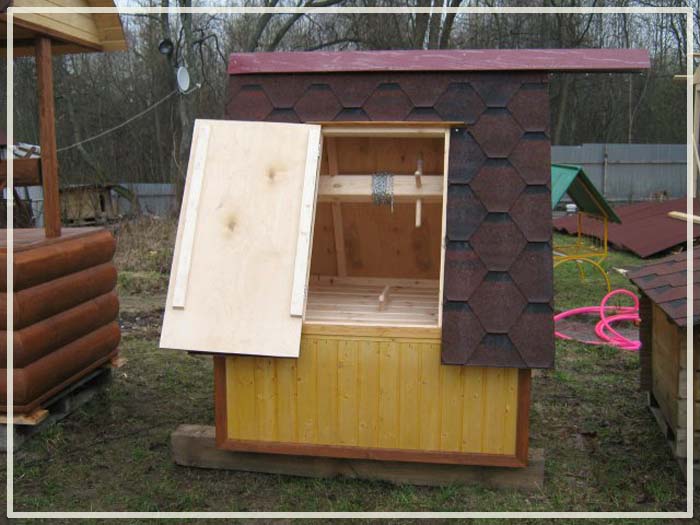 According to SNiP, the head of the well must be at least half a meter high. Usually it is made from the same concrete rings, but to increase the aesthetic appeal, the structure is lined with stone, brick, plastered or sheathed with timber. When installing the head, do not forget about such important points:
We also recommend | ||||||||||||||||||||||





